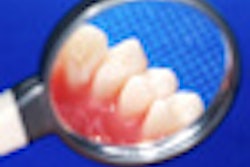A new study of marine sponges could lead to an understanding of how to break up harmful bacterial biofilms, even on teeth (Molecular Microbiology, September 2012, Vol. 85:5, pp. 916-933).
The study identified a new signaling system that, when there is a critical mass of bacteria present, causes the bacteria to produce a flagellum that moves like a corkscrew and gives them the ability to swim away, inhibiting the formation of biofilm, according to a press release from the University of Maryland's Center for Environmental Science in Baltimore.
The study could help scientists understand how bacteria become pathogenic in humans or how they form film on teeth or internal medical devices, which could prove useful in controlling biofilms, the researchers said.
Marine sponges harbor complex and diverse bacterial communities, in some cases as much as 30% to 40% of the sponge's biomass, the researchers noted. This high density of bacteria is an ideal place to study signaling, or how bacteria communicate with each other using small chemical molecules.
The bacteria that colonize and are dependent on these marine sponges use quorum sensing to activate their locomotion when their population becomes dense, naturally limiting the amount of biofilm they form.
Similar mechanisms may be at play in other complex microbial communities within hosts, such as those within human intestines and in symbiotic plants, the researchers noted.



















